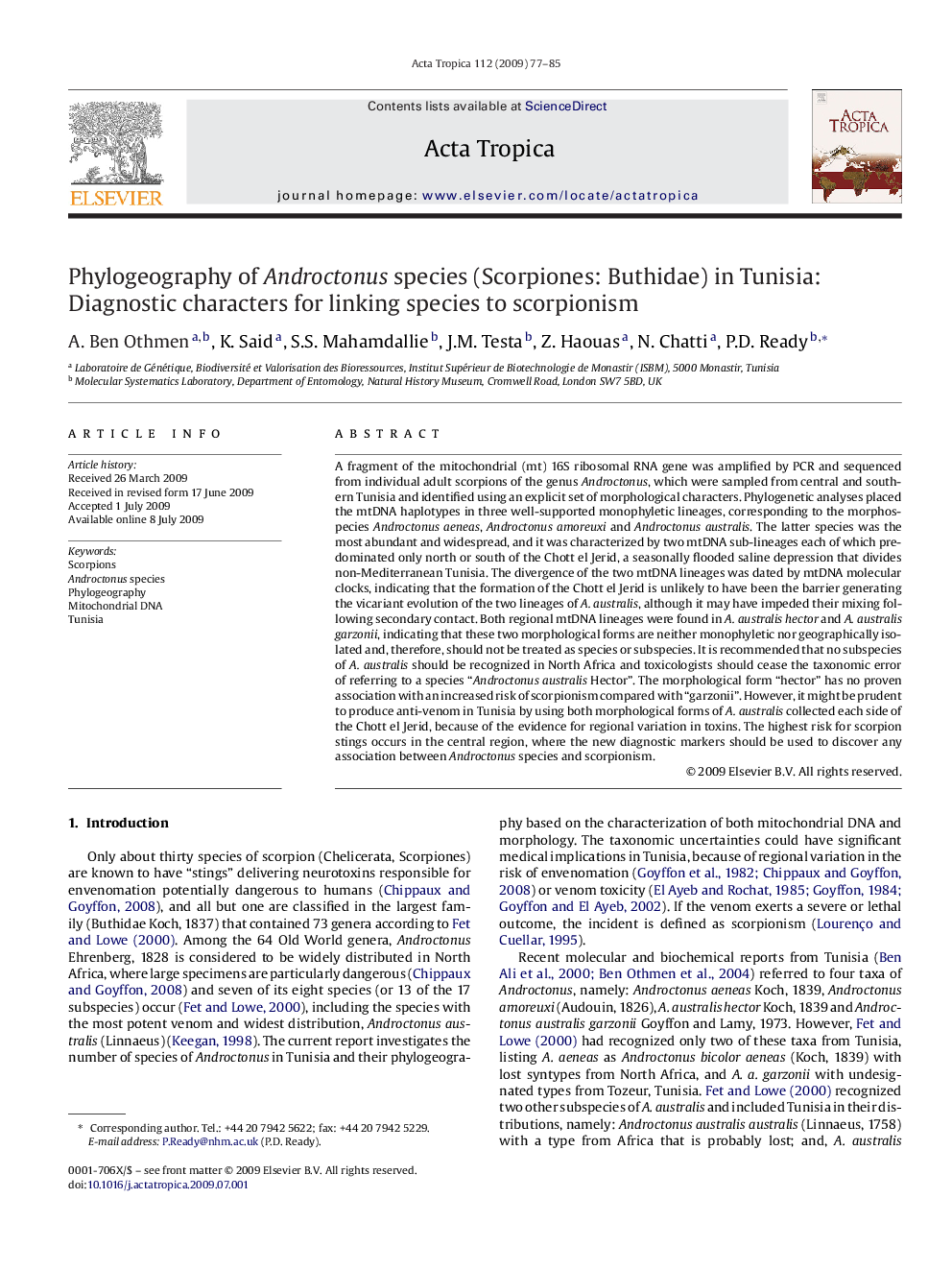| Article ID | Journal | Published Year | Pages | File Type |
|---|---|---|---|---|
| 3394068 | Acta Tropica | 2009 | 9 Pages |
A fragment of the mitochondrial (mt) 16S ribosomal RNA gene was amplified by PCR and sequenced from individual adult scorpions of the genus Androctonus, which were sampled from central and southern Tunisia and identified using an explicit set of morphological characters. Phylogenetic analyses placed the mtDNA haplotypes in three well-supported monophyletic lineages, corresponding to the morphospecies Androctonusaeneas, Androctonusamoreuxi and Androctonusaustralis. The latter species was the most abundant and widespread, and it was characterized by two mtDNA sub-lineages each of which predominated only north or south of the Chott el Jerid, a seasonally flooded saline depression that divides non-Mediterranean Tunisia. The divergence of the two mtDNA lineages was dated by mtDNA molecular clocks, indicating that the formation of the Chott el Jerid is unlikely to have been the barrier generating the vicariant evolution of the two lineages of A. australis, although it may have impeded their mixing following secondary contact. Both regional mtDNA lineages were found in A. australis hector and A. australisgarzonii, indicating that these two morphological forms are neither monophyletic nor geographically isolated and, therefore, should not be treated as species or subspecies. It is recommended that no subspecies of A. australis should be recognized in North Africa and toxicologists should cease the taxonomic error of referring to a species “Androctonus australis Hector”. The morphological form “hector” has no proven association with an increased risk of scorpionism compared with “garzonii”. However, it might be prudent to produce anti-venom in Tunisia by using both morphological forms of A. australis collected each side of the Chott el Jerid, because of the evidence for regional variation in toxins. The highest risk for scorpion stings occurs in the central region, where the new diagnostic markers should be used to discover any association between Androctonus species and scorpionism.
